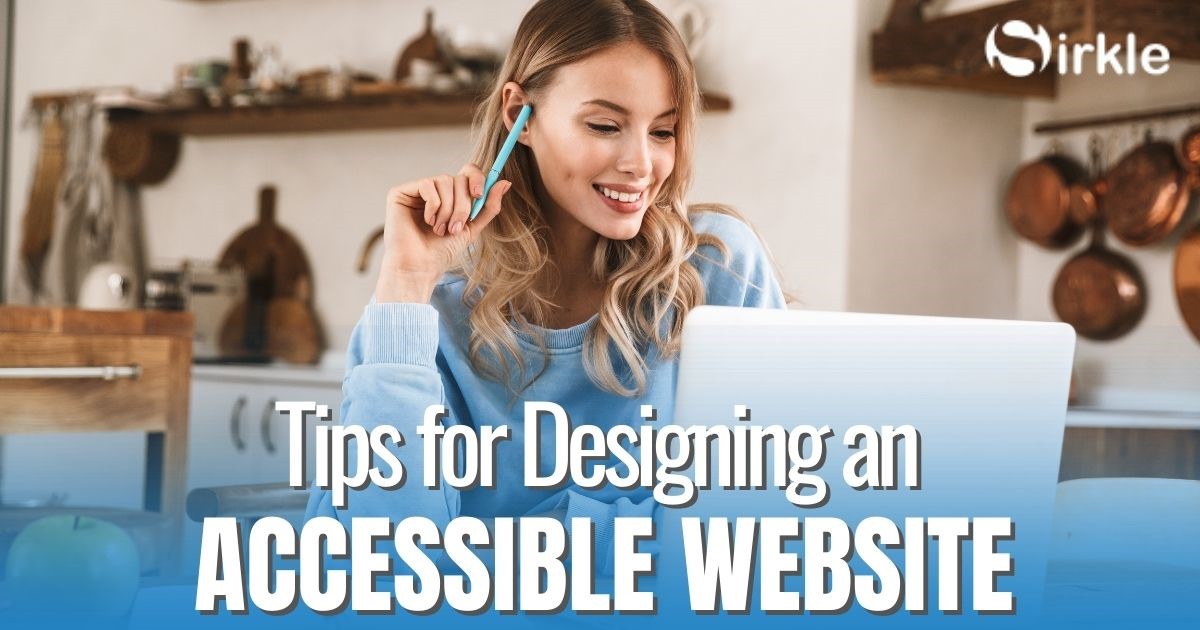Tips For Designing An Accessible Website

People are in business to make money, and revenue generation is the ultimate goal of most business websites, not just informational. Even though everyone tells you to find a niche in your field, you still know that numbers matter, and you want your design to appeal to as many people as possible.
When you monitor analytics, you look for spikes in traffic and increased engagement with your content. But are you potentially excluding many potential customers, fans, and followers by not designing for accessibility?
In What Ways Does Accessible Design Attempt To Include People?
Most people think of people with permanent visual, auditory, and cognitive disabilities when designers talk about accessible or inclusive design. Nevertheless, this is actually a much broader demographic. Additionally, accessible design means considering how to include people who may be temporarily disabled (such as those who suffer from a broken limb) or who may have gradual changes in their abilities (such as the elderly).
Be inclusive of those who may not have access to high-speed internet or who only use a mobile phone to access the internet. Design your website to meet the needs of your website's visitors. Are they likely to access your site while experiencing a stressful situation? Are they usually in a noisy, bright environment or a quiet, dimly lit environment?
If you take into account your visitors' cultural, linguistic, and socioeconomic backgrounds, you may find that they cannot relate to the images you choose. But in the end, they will still become awesome customers.
I have compiled a list of my top four tips for creating a more accessible web design.
1. Keep layouts clean and simple.
Layouts that are cluttered aren't just bad design, they can be difficult to understand and interact with as well. The back button will likely be clicked if visitors cannot find answers to their questions quickly or need to work too hard to figure out what you're asking them to do. A dexterity issue may also make it difficult for those with small elements to interact with those that are clustered too closely to each other.
2. Use color wisely.
Think beyond how you see color on your website when considering it. Not only should you consider those with visual impairments, but also those who may be viewing your site on a mobile phone in bright sunlight or an elderly user who may benefit from high-contrast elements as well. If you want your visitors of all abilities to be able to find and discover your content, offer alternatives to color to differentiate different parts of your navigation.
3. Put alt text, metadata and links to work.
This is yet another example of how designing for all can make search engines such as Google happy. Alt text was originally used to feed information to screen readers and is now a standard best practice for SEO. Adding keyword-rich content to your website will help users, including captions for videos and audio files, as well as text transcripts for audio and video files.
Users and search engines will both benefit if you avoid using the "read more here" text hyperlink. Using natural language to describe what will happen after clicking is more helpful to users and search engines alike.
4. Remember, boring and consistent can be good things.
When we work in tech or on websites every day, using the same interfaces and features can get boring, so we come up with new ways of styling buttons or interacting with content. It may be great for moving the field forward, but most users want buttons to look and behave like buttons, along with navigation that appears in the "traditional" way.
In spite of the fact that cutting-edge web design does have its place, it is not a requirement for an everyday business website. Users who are less tech-savvy expect web designs to remain static and consistent. If visitors have to learn a new set of rules for interacting with your content, they will not give your site a chance and will quickly become frustrated if things don't work as they should. The design of buttons, navigational layout, and other structural elements should be boring.
Inclusive design benefits everyone.
It is great news that designing for a wide audience forces you to implement some standard web design best practices because now you know how to make sure your web design appeals to a broader demographic. Studies have shown that accessible websites perform better in search, have lower maintenance costs, and reach a wider audience, according to usability.gov.
Accessible design benefits all of us equally, whether we use a phone or a voice assistant such as Siri, Alexa, or Google Home to interact with the web. That's what we call a win-win.
Got questions? Visit us @ www.sirkle.com and we’re happy to help.


